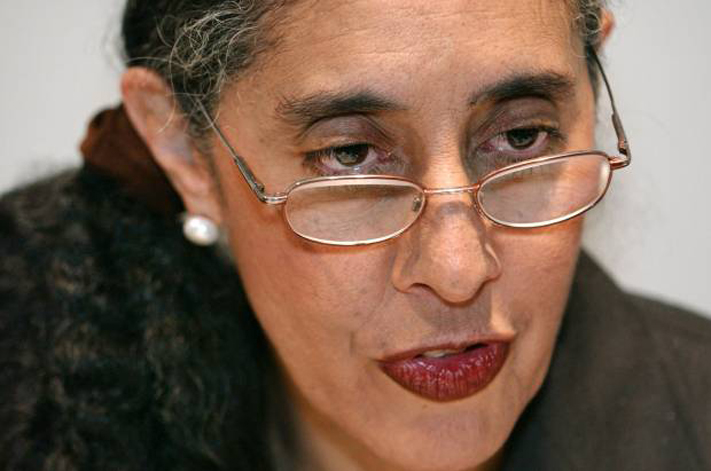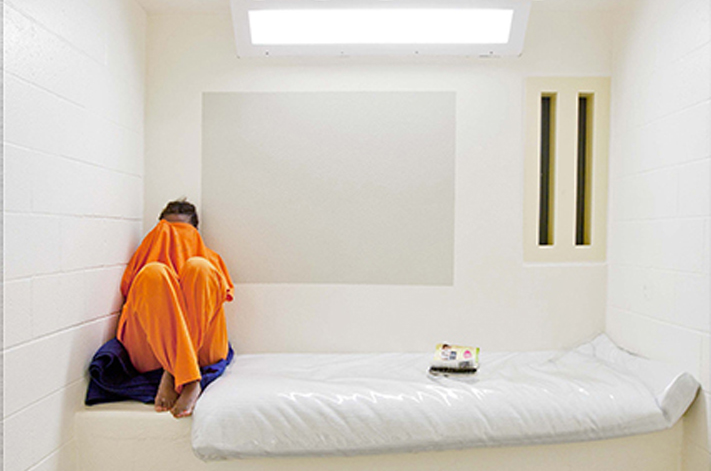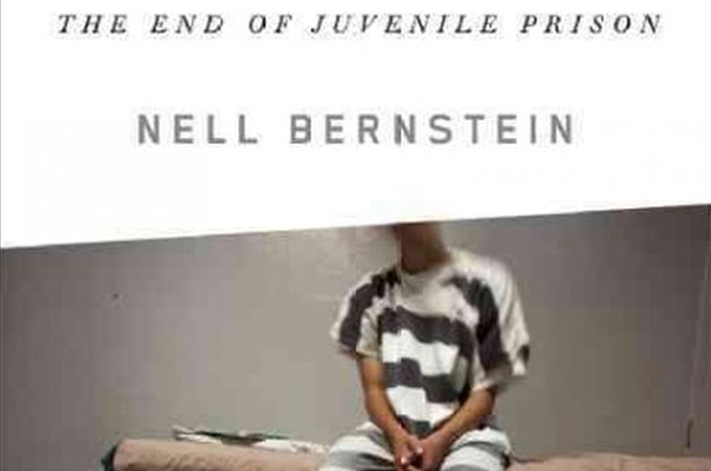Project Description
MLK dreamed of a world where race doesn't divide us — not one where we pretend it doesn't exist.
Why do so many whites respond to the dog whistle refrain that they, and not minorities, are today’s most likely victims of racial discrimination? Colorblindness helps to legitimate the substance of dog whistle complaints because it promotes understandings of race and racism that obscure discrimination against nonwhites and magnify the ostensible mistreatment of whites.
“Is your baby racist?” The question blared from the cover of Newsweek Magazine in September 2009, eight months after the inauguration of the nation’s first black president. The accompanying story reported on several recent studies showing that young children not only notice race, they repeat painful stereotypes. In one study, a researcher recruited roughly 100 families from Austin, Texas; all of the families were white, with children between the ages of five and seven. When the children were asked how many white people were “mean,” they commonly answered “almost none.” But when asked how many blacks were mean, many answered “some” or “a lot.” The thrust of the article seemed to be that children possess racial biases. However eye-catching the title, though, it pointed in the wrong direction—at infants and little children rather than adults. The core of the article focused on parenting strategies, and especially on the desire to raise children to be colorblind—to be blind to race. The parents were not teaching their children to be bigots. Instead, they were doing their utmost to teach their children to reject racism by studiously ignoring race. Yet, even in a liberal bastion like Austin, it wasn’t working.
Today the dominant etiquette around race is colorblindness. It has a strong moral appeal, for it laudably envisions an ideal world in which race is no longer relevant to how we perceive or treat each other. It also has an intuitive practical appeal: to get beyond race, colorblindness urges, the best strategy is to immediately stop recognizing and talking about race. But it is especially as a strategy that colorblindness fails its liberal adherents. We cannot will ourselves to un-see something that we’ve already seen. In turn, refusing to talk about a powerful social reality doesn’t make that reality go away, but it does leave confused thinking unchallenged, in ourselves and in others. The Austin children exemplify this. Differences in race—including physical variation and its connection to social position—resemble differences in gender: they are plainly visible to new minds eager to make sense of the world around them. When unexplained, however, children (and our unconscious minds) are left susceptible to the power of stereotypes. As the Newsweek authors conclude, “children see racial differences as much as they see the difference between pink and blue— but we tell kids that ‘pink’ means for girls and ‘blue’ is for boys. ‘White’ and ‘black’ are mysteries we leave them to figure out on their own.”
We cannot will ourselves to un-see something that we’ve already seen. In turn, refusing to talk about a powerful social reality doesn’t make that reality go away, but it does leave confused thinking unchallenged, in ourselves and in others.
We should also acknowledge that colorblindness has an additional appeal: it seems to provide a safe route through the minefield of race relations. Many whites are understandably nervous to talk about race at all, though especially in racially mixed company. What if they slip and say something that sounds ignorant, or worse, bigoted? Simply avoiding race altogether seems to offer a solution. Yet, those who adopt a colorblind strategy often come across as more racially hostile, not less. Refusing to acknowledge obvious social differences creates an impression of suppressed dislike, and studies have shown that whites who studiously avoid mentioning race even when it is clearly relevant are perceived as more bigoted. Perhaps this contributed to how the Austin children came to interpret their parents’ racial attitudes, after their parents tried so hard to suppress references to race. Asked “do your parents like black people,” more than half either said “no, my parents don’t like black people,” or simply answered, “I don’t know.” The researchers remarked, “in this supposed race-free vacuum being created by parents, kids were left to improvise their own conclusions— many of which would be abhorrent to their parents.”
If colorblindness seems to backfire, is there something that does help our children—and us—navigate the dangerous shoals of race? Yes: talking openly about racial differences and what they might mean. Psychological research shows that cognitive biases in social judgment “can be controlled only through subsequent, deliberate ‘mental correction’ that takes group status squarely into account.” The Austin researchers reached a similar conclusion, for they urged parents to use in the racial context the express methods they employ to help children overcome gender stereotypes. “Parents are very comfortable talking to their children about gender, and they work very hard to counter-program against boy-girl stereotypes. That ought to be our model for talking about race. The same way we remind our [children], ‘Mommies can be doctors just like daddies,’ we ought to be telling all children that doctors can be any skin color. It’s not complicated what to say. It’s only a matter of how often we reinforce it.” In other words, best practices in the area of race involve doing the opposite of what colorblindness seems to command. We must notice and talk about race, self-critically and carefully, in order to understand and attempt to set aside its power over our imaginations.
As the Austin families found out, colorblindness fails as a strategy for transcending race on an interpersonal level. It’s bad advice for those genuinely endeavoring to eliminate racism from their lives.
(B)est practices in the area of race involve doing the opposite of what colorblindness seems to command. We must notice and talk about race, self-critically and carefully, in order to understand and attempt to set aside its power over our imaginations.
It’s also bad advice for those seeking to comprehend and respond to dog whistle politics. Dog whistling cannot be resisted by refusing to talk about race, for this only leaves constant racial insinuations unchallenged, operating in the background to panic many whites. Indeed, dog whistle racism is not only protected by colorblindness, it rests fundamentally on colorblind myth-making.
Much more than a racial etiquette, colorblindness provides a powerful framework shaping how people think about race and racism, and in doing so it helps give credence to dog whistle themes. Part of the power of colorblindness comes from its liberal origins and its close association with civil rights heroes, a linkage conservatives constantly belabor. Beyond this, the potency of colorblindness comes from what it teaches about racial discrimination, lessons almost always gleaned at the level of commonsense. Under the umbrella of colorblindness, ideas regarding race and racism geared toward protecting the superior position of whites in society have evolved significantly since the civil rights era. After tracing the history and conservative hijacking of colorblindness, this chapter focuses on bringing to the surface the core stories colorblindness spins—about the end of discrimination against minorities, the blame they deserve for their inferior social positions, the innocence of contemporary whites, and their racial victimization. These narratives undergird dog whistle politics in its effort to portray nonwhites as threats and whites as imperiled.
Colorblindness: From Radical To Reactionary
The term “colorblind” comes to us from Justice John Marshall Harlan’s lone dissent in Plessy v. Ferguson, the 1896 case that announced the “separate but equal” standard that sanctioned racial segregation throughout society. Louisiana had recently enacted a law requiring that black and white railroad passengers ride in separate cars; turning back a challenge to this law as naked racial discrimination, eight justices voted to uphold it, thereby ensuring decades of group debasement symbolized and fortified by legally enforced segregation. Harlan dissented and declared—in what amounted to aspiration rather than description—that “Our Constitution is color-blind, and neither knows nor tolerates classes among citizens.”
Today, conservative advocates of colorblindness use this term as a shorthand for their opposition to affirmative action. They contend that colorblindness means government should never take race into account, not even as a way to promote racial equality. In 2007, the conservative Supreme Court justices blocked public school districts from considering race when assigning pupils to schools, even when seeking to maintain hard-won integration. Justifying this rigid rule, Justice Clarence Thomas proclaimed himself “quite comfortable with the company I keep. My view of the Constitution is Justice Harlan’s view in Plessy: ‘Our Constitution is color-blind.’”
Today, conservative advocates of colorblindness use this term as a shorthand for their opposition to affirmative action. They contend that colorblindness means government should never take race into account, not even as a way to promote racial equality.
Thomas’ invocation of Harlan to oppose integration is misplaced. First, Harlan clearly never meant to proscribe all governmental uses of race. Rather, Harlan advocated colorblindness to limit excessive oppression, in the context of what he supposed would be the eternal reign of white supremacy. He began the very paragraph in which he invoked colorblindness as follows: “The white race deems itself to be the dominant race in this country. And so it is, in prestige, in achievements, in education, in wealth and in power. So, I doubt not, it will continue to be for all time.” Harlan approved of many government racial restrictions that codified what he perceived as the natural inferiority of blacks. Some years before Plessy, Harlan had voted to uphold an Alabama law forbidding interracial marriage. And two years after Plessy, Harlan wrote an opinion supporting a whites-only high school. Harlan’s famous dissent was not a call that the country literally become blind to race; quite the contrary. Perceiving a world where racial hierarchy was fixed, Harlan interpreted the Constitution to allow society to mark boundaries around those naturally relegated to the bottom. Even so, unlike his brethern, he objected to extreme civic exclusion. Harlan opposed the segregated train cars at issue in Plessy because he felt they unfairly limited the capacity of blacks to participate in civil life and the marketplace, not because he opposed any governmental use of race, and certainly not because he thought, as contemporary colorblindness doctrine asserts, that the Constitution forbade state efforts to ameliorate racism.
Notwithstanding Harlan’s own limited conception of colorblindness, as the civil rights movement gathered steam in the 1940s, its leading lawyers seized on “colorblindness” to challenge Jim Crow. The phrase “Our Constitution is color-blind” carried important rhetorical force, for in its simple declarative form it seemed to command an immediate end to all government laws mandating racial segregation. Thurgood Marshall, as lead counsel for the NAACP Legal Defense Fund, repeatedly encouraged his colleagues to cite Harlan’s famous aphorism. One lawyer recalled that the Plessy dissent was Marshall’s “Bible to which he turned during his most depressed moments. . . . I do not believe we ever filed a major brief in the pre-Brown days in which a portion of that opinion was not quoted. Marshall’s favorite quotation was, ‘Our Constitution is colorblind.’ . . . It became our basic creed.” Clarence Thomas uses “colorblindness” more in the manner of Thurgood Marshall than John Harlan, as an argument against all government uses of race. Yet there is a crucial difference: Marshall did so when states overwhelmingly used race to humiliate and exclude; Thomas does so now that government virtually only employs race to remedy centuries of racism.
In 1954, the Supreme Court in Brown v. Board of Education overturned Plessy and formally ended school segregation. Notably, though, the justices did not adopt a colorblind bar on all government uses of race. Adopting strict colorblindness would have battered apart the entire edifice of segregation laws at once. The Supreme Court preferred to dismantle segregation “with all deliberate speed.” Put bluntly, this reflected a decision to temporize: the Court feared taking on too much too rapidly. It particularly sought to avoid abruptly declaring unconstitutional the emotional core of white supremacy—the ban on interracial marriage. Just after Brown, the Court used a procedural feint to avoid deciding a miscegenation case. Only piecemeal and over time did the Court extend Brown to completely outlaw segregation, waiting over 13 years before it finally knocked down laws banning marriage between whites and persons of different races in Loving v. Virginia.
Ironically, while the Court initially eschewed colorblind reasoning in order to protect segregation from too sudden an assault, over time the decision not to flatly prohibit government distinctions based on race came to seem wise for the goals of racial justice. By the mid-1960s, it was clear that through state subterfuge and social convention, racial segregation readily continued even absent laws expressly mandating it. As late as 1965, 11 years after school segregation was declared unconstitutional, fewer than 1 in 100 black students in the South attended schools formerly white by law, and the number of whites in predominantly black schools was infinitesimally small. Though absolute colorblindness had been their watchword for decades, in the late 1960s civil rights lawyers dropped this demand. Instead, they began to stress the necessity of actively taking race into account to promote meaningful integration. This meant more than getting the Court to move faster than “with all deliberate speed.” It meant actively pursuing integration through measures that used race as a tool, including through race-conscious placements of students, teachers, and administrators, and through the race-conscious allocation of resources.
Ironically, while the Court initially eschewed colorblind reasoning in order to protect segregation from too sudden an assault, over time the decision not to flatly prohibit government distinctions based on race came to seem wise for the goals of racial justice.
Race-conscious efforts to promote integration reflected a basic insight about racial inequality: outlawing mistreatment was a step in the right direction, but by itself would not significantly correct settled disadvantage. Martin Luther King, Jr., expressed this idea using the metaphor of a foot race. In his 1964 book Why We Can’t Wait, King lamented:
whenever the issue of compensatory or preferential treatment for the Negro is raised, some of our friends recoil in horror. The Negro should be granted equality, they agree; but he should ask for nothing more. On the surface, this appears reasonable, but it is not realistic. For it is obvious that if a man is entered at the starting line in a race three hundred years after another man, the first would have to perform some impossible feat in order to catch up with his fellow runner.
For King, and for the civil rights movement more generally, the goal was not merely to end formal segregation, but to break the deep connection between race and disadvantage. Simply declaring segregation laws illegal would not make African Americans “equal” in the eyes of a society steeped in degrading views of nonwhites. Nor would the end of formal segregation by itself equip a people hobbled by centuries of oppression to singlehandedly overcome the economic legacy of racism, especially in a society still accustomed to reserving the best jobs, neighborhoods, and schools for whites. Widespread acceptance of the supposed inferiority of blacks and the concrete realities of a stratified society combined to limit the life chances of those glibly declared “equal” and “free” the moment Jim Crow laws were struck down. As King recognized, true equality would be a long-term, arduous process. In this effort, policies and programs that used race as a basis for planning, for the distribution of resources and contracts, and for the allocation of spots in universities and workplaces, provided the most direct way to begin the process of social repair.
The Rise Of Conservative Colorblindness
Brown’s command to end segregation provoked fervent opposition in the South, including political posturing by demagogic politicians like George Wallace and race riots by whites—and it also engendered a conservative reworking of colorblindness. Marshall himself had worried that colorblindness had an Achilles heel. While a colorblind ruling had the potential to overturn at once all segregation laws, it seemed to require no more than an end to such laws, not actual integration. For the government to be technically colorblind, it need do nothing more than avoid direct references to race in its laws. This insight was scarcely lost on the recalcitrant South. A federal district court in South Carolina articulated a colorblind argument against integration as early as 1955: “The Constitution . . . does not require integration. It merely forbids discrimination. It does not forbid such segregation as occurs as the result of voluntary action. It merely forbids the use of governmental power to enforce segregation.” From here, it was but a short logical jump to the contention that colorblindness prohibited race-conscious integration measures. In 1965, the same court approvingly quoted the conclusion that “the Constitution is color-blind; it should no more be violated to attempt integration than to preserve segregation.” Thus by 1965, a conservative form of colorblindness had emerged: according to the newest friends of the theory, the Constitution forbade any state use of race, whether to segregate or—and this was the real agenda—to integrate.
Marshall himself had worried that colorblindness had an Achilles heel.
Among these new proponents of colorblindness was Barry Goldwater. In October 1964, Goldwater was preparing to give his first full address to the nation on civil rights. He had been campaigning in the South on the strength of his vote against the 1964 Civil Rights Act, and now he faced a high-wire routine: On the one hand, he needed the votes of defiant whites and could not risk jeopardizing their support. On the other, he could not afford to come off as a redneck cowboy before the nation as a whole. Goldwater struck a balance: he would stick to his opposition to integration, but would dress it up in a tuxedo and give it a haircut. He decided to deliver his remarks at a $100-a-plate fundraiser, anticipating that the well-heeled assembly would avoid awkward outbursts supporting segregation.
To costume his position, Goldwater sought assistance trimming his language, enlisting a Phoenix lawyer named William Rehnquist to help write the speech. Rehnquist was an outspoken critic of civil rights, with a track record going back to Brown itself. When that case was first argued, Rehnquist had been a law clerk to one of the justices hearing it, and had written a memo urging that segregation be upheld, averring that “Plessy v. Ferguson was right and should be re-affirmed.” But in the decade since, Rehnquist had moderated his language, and by 1964 he couched his opposition to civil rights as support for property rights (that is, the right of property owners to discriminate racially), making him an ideal choice to help Goldwater recalibrate his message. Entitled “Civil Rights and the Common Good,” the talk reprised the property rights argument, but also took another rhetorical turn, masterfully co-opting the language of civil rights to oppose integration as a moral evil. “It has been well-said that the Constitution is color-blind,” Goldwater began, before according that hallowed phrase its perverse new meaning: “And so it is just as wrong to compel children to attend certain schools for the sake of so-called integration as for the sake of segregation.” His audience knew what he meant: government should not use race to impose integration on unwilling whites. Despite their polished cuff links and pearls, the crowd roared approval, “letting loose a hail of wolf whistles and throaty cries that raised the roof.”
When this reactionary version of colorblindness first reached the Supreme Court, it met unequivocal rejection. By this time, the Court included Thurgood Marshall, who had been appointed by Lyndon Johnson. In 1971, a unanimous Court overturned a North Carolina law requiring “color blind” school assignments, deeming it merely the latest stratagem to avoid integration. Seeing through this cynical maneuver, the Court warned against laws that “control school assignment plans by directing that they be ‘color blind’; that requirement, against the background of segregation, would render illusory the promise of Brown v. Board of Education.” The Court explained, “Just as the race of students must be considered in determining whether a constitutional violation has occurred, so also must race be considered in formulating a remedy. To forbid, at this stage, all assignments made on the basis of race would deprive school authorities of the one tool absolutely essential to fulfillment of their constitutional obligation to eliminate existing dual school systems.”
In 1971, a unanimous Court overturned a North Carolina law requiring “color blind” school assignments, deeming it merely the latest stratagem to avoid integration. Seeing through this cynical maneuver, the Court warned against laws that “control school assignment plans by directing that they be ‘color blind.’
This stand against reactionary colorblindness did not hold. Nixon appointed four justices to the Court. We’ve now met two. The first was Lewis Powell, the author of the memorandum urging corporations to create their own indebted intelligentsia. The second was William Rehnquist, the Plessy supporter and Goldwater speechwriter—and, it bears adding, Ronald Reagan’s eventual choice to serve as Chief Justice, a post he held from 1986 until his death in 2005. These appointments sharply changed the Court’s political composition, especially with regard to civil rights. By 1978, now on the losing side, Justice Marshall found himself urging his new colleagues to reject race-blindness as a bar on affirmative action: “It is because of a legacy of unequal treatment that we now must permit the institutions of this society to give consideration to race in making decisions about who will hold the positions of influence, affluence, and prestige in America.” Marshall did not prevail, either for colorblindness as a NAACP lawyer fighting segregation, or against it as a Supreme Court justice seeking to protect an essential means of promoting integration. Instead, over the last few decades conservative justices have steered the Court toward a colorblind vision in which, as we see next, racism against minorities is over while racism against whites is rampant.
Today’s Reactionary Constitution
In the late 1960s, a structural conception of racism began to take hold, briefly influencing equality law. For instance, this view gained national prominence in 1968 when the National Advisory Commission on Civil Disorders published what became popularly known as the Kerner Report. Seeking to explain the devastating riots marching across the country, from Los Angeles in 1965, to Chicago in 1966, to Newark in 1967, the report famously warned that the United States was “moving toward two societies, one black, one white— separate and unequal.” Buttressing this claim, the report detailed the punishing reality confronting African Americans, compiling over 500 pages of evidence on the extreme material hardships of overt discrimination, segregated and inferior schooling, inadequate housing, lack of access to health care, systemic police violence, and labor market exclusion. More than simply painting the harrowing circumstances confronting blacks, the report identified its root cause not in blacks themselves but in American racial dynamics. Focusing particularly on the ghetto, the report stated on its first page that “segregation and poverty have created in the racial ghetto a destructive environment totally unknown to most white Americans. . . . White institutions created it, white institutions maintain it, and white society condones it.”
This conception of structural racism began to penetrate the legal field, for instance with a key decision in 1971 holding that outcomes, not just intentions, mattered in cases challenging discrimination. In Griggs v. Duke Power, a large Southern employer had long expressly restricted blacks to menial work, organizing its workforce to ensure that no black would earn as much as the lowest-paid white employee. After Congress enacted the 1964 Civil Rights Act forbidding racial discrimination in employment, the company complied only nominally, adopting hiring requirements that on their face no longer referred to race, but that effectively preserved the established racial hierarchy. Still, the company’s new procedures were technically neutral, and this challenged the courts to look behind the surface at actual social patterns, including outcomes. In Griggs, the Supreme Court found the company liable for discrimination, warning that “good intent or absence of discriminatory intent does not redeem employment procedures or testing mechanisms that operate as ‘built-in headwinds’ for minority groups.” By condemning “built-in headwinds,” the decision seemed to herald a concern with structural discrimination in addition to express exclusion and naked bigotry.
As it turned out, Griggs represented the high-water mark for anti-discrimination law. Over the remainder of the decade, conservatives on the Court, including Powell and Rehnquist, chipped away at the standard for proving discrimination against nonwhites. By 1979, the Court had embraced the “racism as hate” model we continue to struggle under today, demanding proof of malice on the part of a culpable actor. This bar is almost insurmountable. Absent a recorded use of a racial epithet or an in-court confession, malice is virtually impossible to prove. For instance, in a 1987 death penalty case the Court weighed a Georgia system that was 22 times more likely to impose capital punishment on an African American convicted of murdering a white versus a black victim. The Court deemed this stark racial disparity irrelevant. It also dismissed as immaterial that this statistical pattern strongly correlated with social practices of white-over-black hierarchy stretching back to slavery. Refusing to even engage this evidence, the conservatives on the Court stubbornly maintained that the sole measure of racism was proof of malice, and then they upheld Georgia’s death penalty machinery. Under the Court’s approach to discrimination against nonwhites, only a bullheaded bigot who publicly vows to harm minorities should worry; no one else need fret. Since the Supreme Court adopted the malice test in 1979, it has never found discrimination against non-whites under that approach, not even once. As far as the Court is concerned, racism against nonwhites must involve proclaimed animus, and that has all but disappeared.
What, then, of supposed discrimination against whites? In 1977 the Court for the first time fully considered a challenge to race-conscious affirmative action when it weighed the legality of New York’s decision to create a majority-nonwhite voting district. The Court applied its developing intentional harm rule. Then, saying it could discern “no racial slur or stigma with respect to whites or any other race,” the Court easily upheld this corrective use of race. The constitutional law seemed clear: all allegations of racial discrimination, whether against nonwhites or whites, would have to meet the same test of intentional harm. But this rule had an unfortunate consequence, at least from the conservative justices’ point of view: it readily upheld affirmative action plans. After all, such efforts were designed to remedy racism rather than to oppress whites.
Focusing particularly on the ghetto, the Kerner Report. stated on its first page that 'segregation and poverty have created in the racial ghetto a destructive environment totally unknown to most white Americans. . . . White institutions created it, white institutions maintain it, and white society condones it.'
If there were incidental harms, these were akin to the ancillary harms that accompany virtually every regulation—matters for legislators to weigh, but far from the sort of purposeful group oppression that the Court demanded nonwhites prove in order to show unconstitutional discrimination.
The next year in University of California v. Bakke, Justice Lewis Powell changed the rules. He concluded that in affirmative action cases, intentions did not matter. It was irrelevant, he said, whether a program was motivated by malice or benevolence. Paralleling the Southern use of colorblindness to oppose integration, Powell instead insisted that the constitutional harm occurred the moment that government took express notice of race. After Bakke, the constitutional law around racial discrimination bifurcated. If the state expressly mentioned race—common almost exclusively in affirmative action programs—then the Court would review the legislation with extreme skepticism, in virtually every case overturning the challenged program. If, however, the government avoided any direct invocation of race—the new normal in discrimination cases—then the Court would demand proof of malice, an insuperable hurdle. A reactionary form of colorblindness became king: quick to condemn all corrective uses of race, but blind to racial discrimination against minorities.
Excerpted from “Dog Whistle Politics: How Coded Racial Appeals Have Reinvented Racism and Wrecked the Middle Class” by Ian Haney López. Copyright © 2014 by Ian Haney López. Reprinted by arrangement with Oxford University Press, a division of Oxford University. All rights reserved.
Ian Haney-López is a law professor and the author of “Dog Whistle Politics: How Fifty Years of Coded Racial Appeals Wrecked the Middle Class.” Follow him on Twitter @DogWhistleRace.
This piece was reprinted by EmpathyEducates with permission or license. We thank the Author, Ian Haney-López for his kindness, awareness, research, and for the abundant lessons. We are extremely grateful for what we can “see” when the many vital lessons within our history speak.










